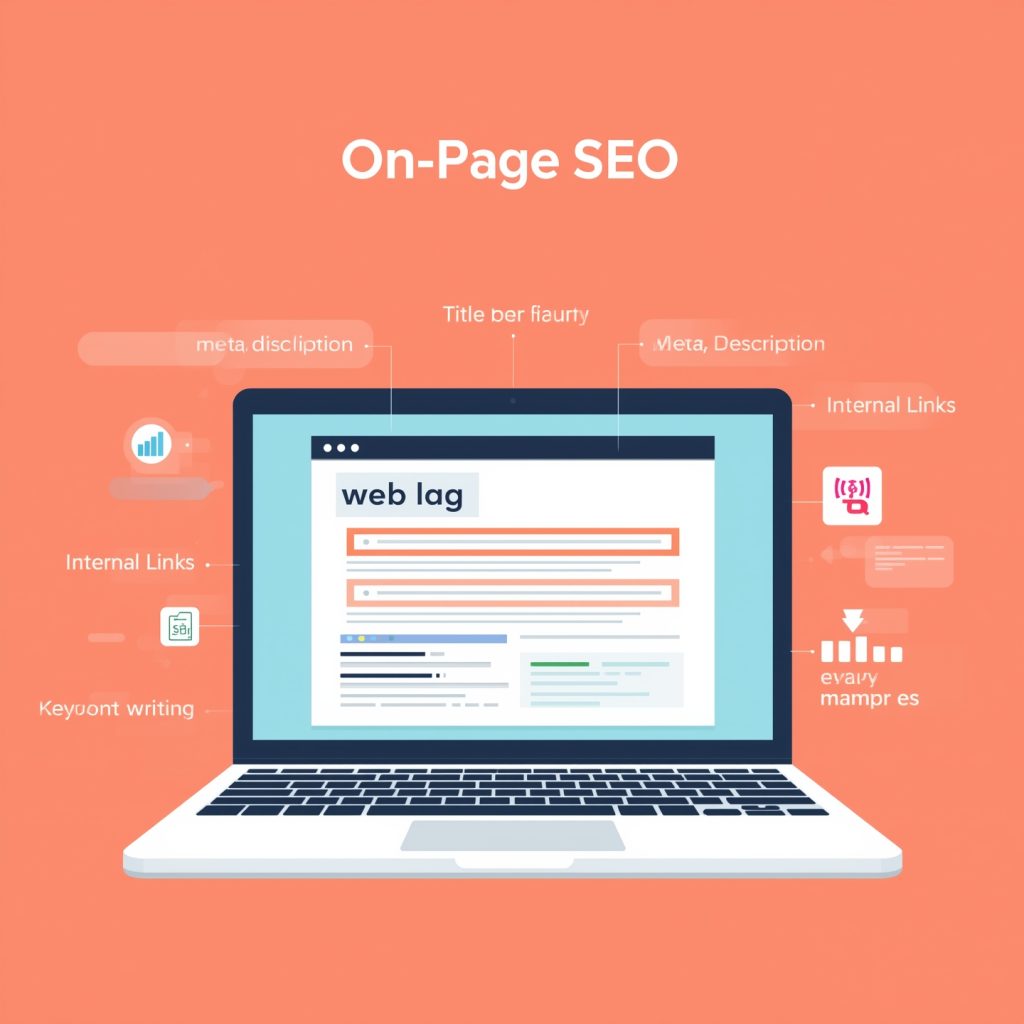On-Page SEO: The Ultimate Guide to Boost Your Website Rankings
Introduction
If you want your website to rank higher in Google and attract more visitors, mastering On-Page SEO is essential. On-page SEO is the practice of optimizing individual web pages to improve their search engine rankings and drive targeted traffic. This involves optimizing content, HTML source code, and user experience.
In this guide, we’ll break down what on-page SEO is, why it’s important, and how you can implement it step-by-step.
What is On-Page SEO?
On-page SEO (also called on-site SEO) refers to all the optimizations you make within your website to help search engines understand your content and serve it to the right audience.
It includes:
- Content optimization
- Keyword usage
- Meta tags
- Headings
- Internal linking
- Image optimization
- URL structure
Why On-Page SEO is Important
Search engines like Google aim to provide the most relevant and high-quality results for users. On-page SEO:
- Improves your website’s visibility in search results.
- Enhances user experience.
- Helps search engines understand your content.
- Increases organic traffic.
Key On-Page SEO Factors
1. Title Tags
- Keep titles under 60 characters.
- Include your main keyword naturally.
- Make it engaging to increase click-through rates.
Example:
❌ “SEO Tips”
✅ “10 Powerful On-Page SEO Tips to Boost Your Rankings”
2. Meta Descriptions
- Keep it under 160 characters.
- Use your target keyword.
- Write a compelling summary to encourage clicks.
Example:
“Learn the top on-page SEO techniques to improve your Google rankings and get more traffic. Simple, actionable, and effective.”
3. Headings (H1, H2, H3…)
- Use only one H1 tag per page (your main title).
- Include keywords in headings for better relevance.
- Break content into sections for readability.
4. Keyword Optimization
- Place your primary keyword in the first 100 words.
- Use related keywords (LSI keywords) naturally.
- Avoid keyword stuffing.
5. Content Quality
- Write in-depth, valuable, and original content.
- Answer user intent.
- Aim for at least 800–1500 words for better ranking potential.
6. Internal Linking
- Link to relevant pages within your site.
- Use descriptive anchor text.
- Helps search engines crawl your site efficiently.
7. Image Optimization
- Use descriptive file names (e.g., on-page-seo-guide.jpg).
- Add alt text with keywords.
- Compress images for faster loading.
8. URL Structure
- Keep URLs short and keyword-rich.
- Avoid unnecessary numbers or special characters.
Example:
❌ yourwebsite.com/page?id=1234
✅ yourwebsite.com/on-page-seo-tips
Bonus Tips for Better On-Page SEO
- Ensure mobile responsiveness.
- Improve page loading speed.
- Use schema markup for rich snippets.
- Maintain a clear site navigation.
Conclusion
On-page SEO is the foundation of your website’s success in search engines. By optimizing your titles, content, images, and internal structure, you’ll improve rankings, increase traffic, and provide a better user experience.
Remember — SEO is not a one-time task. Keep monitoring your performance, update old content, and stay updated with Google’s algorithm changes.
For More Information visit- https://rayhanrana.com/ultimate-guide-to-on-page-seo-in-2025/
And also visit- https://sunilsangma.com/

Pingback: On-Page SEO Best Practices for Higher Rankings in Google